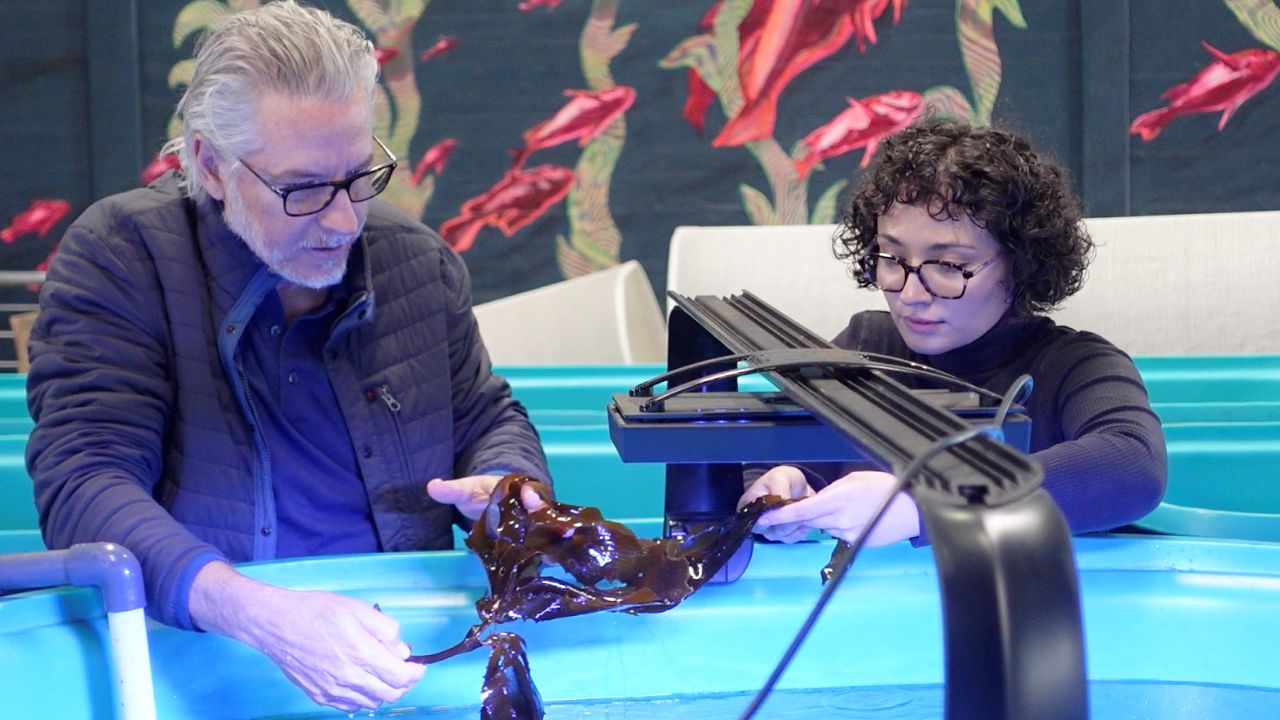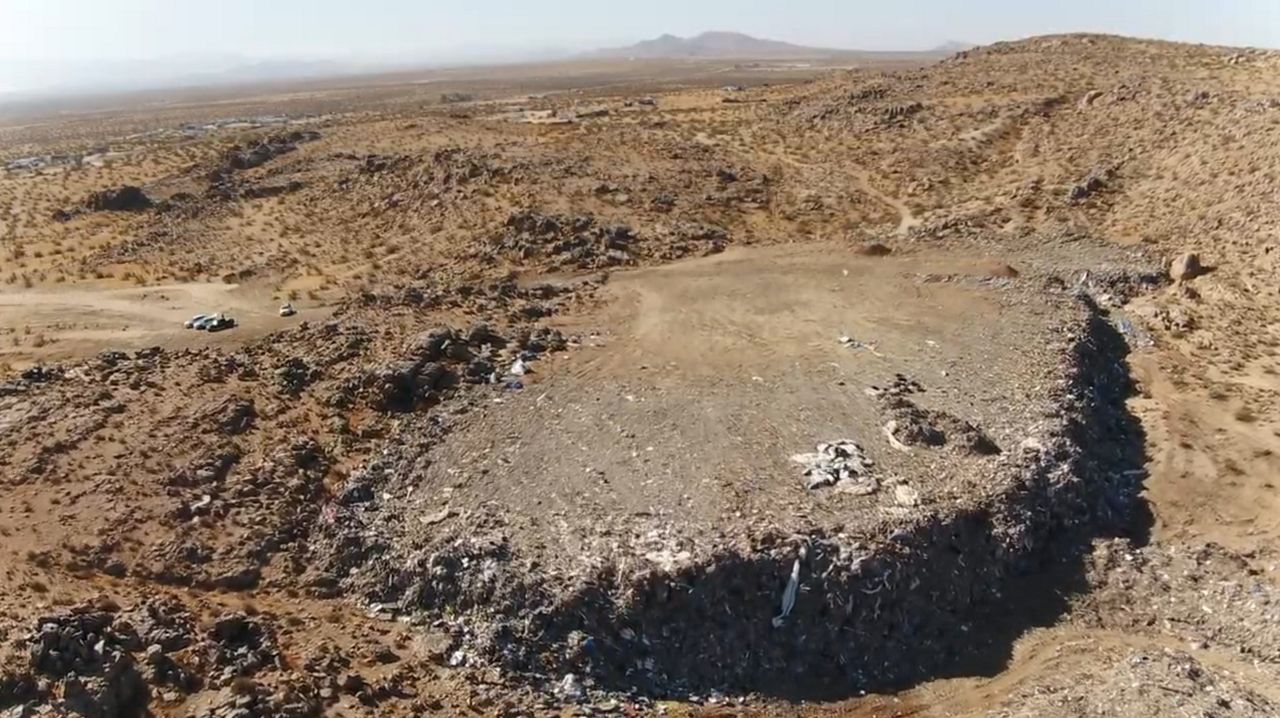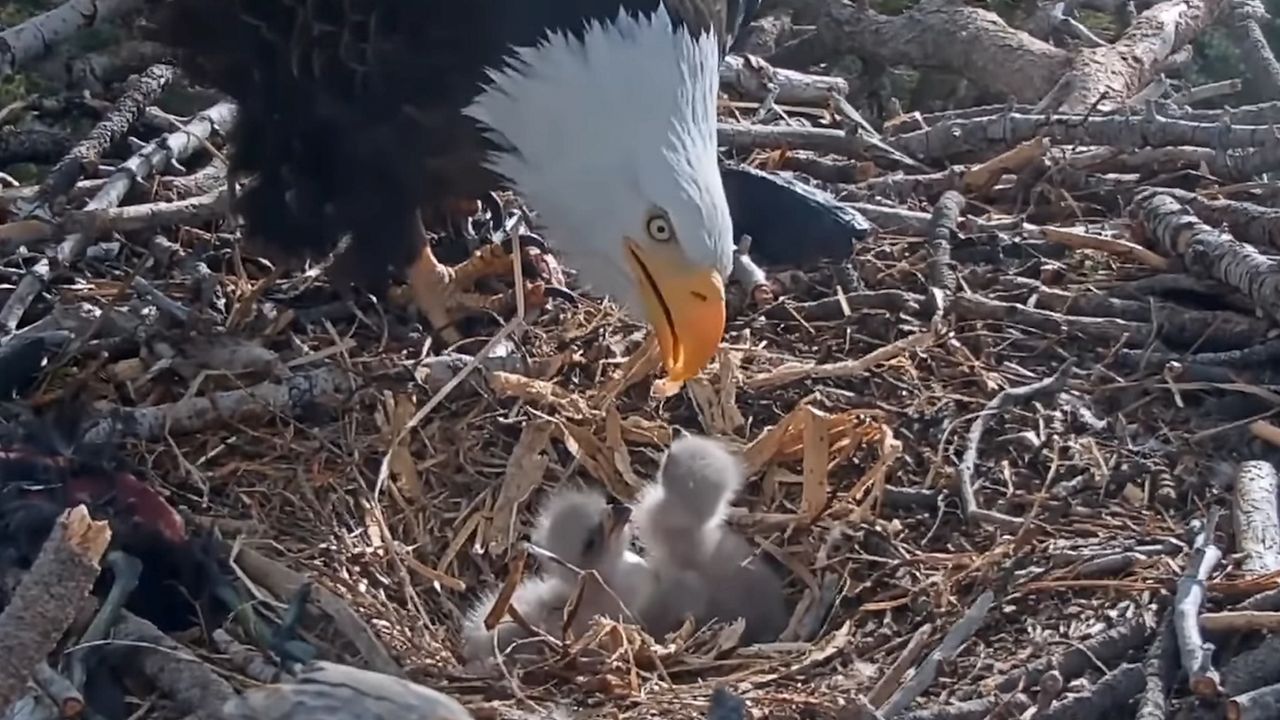MALIBU, Calif. — Below an underused underpass that crosses beneath the Pacific Coast Highway snakes a quiet creek that once was teeming with life. It also used to be a lot bigger.
John Ota, an environmental scientist with California State Parks Angeles District, says the decades-old concrete structure restricted the width of Topanga Creek from what was once a quarter of a mile to now just 79 feet. Over time, that lack of space has taken a huge toll on the species that call the creek home.
“This particular creek is a little bit unique in Southern California in that it never completely dries up, which is why the tidewater gobies really like it here because they always have some water they can hang out in,” said Ota.
Those fish, once plentiful, are now endangered and facing possible extinction. There used to be several hundred to several thousand of them at the site depending on the time of year, Ota noted, but no longer.
“We haven't seen any this year,” he said.
Ota is also concerned about another native Southern California species, the steelhead trout, which also relies on this waterway.
“Almost every creek in Southern California was dammed at one time or another, which prevents the steelhead from being able to swim up and spawn,” Ota said. “Topanga Creek is one of the few that have never been dammed, so it really presents a great opportunity for the recovery of the steelhead.”
Restoration is slow work and this project in particular is complicated, but the tide may be turning. The land that makes up the Topanga Lagoon and its surroundings is owned by different agencies — State Parks, Caltrans and the Los Angeles County Department of Beaches and Harbors — all working together with the Resource Conservation District of the Santa Monica Mountains to determine the best way to protect the beach, the fish, the open space and a unique historic site.
“These cabins were originally part of the 1924 Cooper’s Auto Camp,” Barbara Tejada explained while walking past the very rundown remnants of a collection of cabins.
Tejada is the cultural resource program manager for California State Parks, Angeles District. To her, this facility is a gem — a vestige of a time when people would use autocamps for beach getaways. It’s badly in need of repair, and cabins will have to be moved now that vegetation has overtaken them. But she says removing them entirely would mean losing a piece of local history.
“It is a kind of interesting and funky little bit of history here that would be great to preserve at least a part of,” Tejada said. “It is eligible for the National Register of Historic Places just because it is one of the few surviving 1930s-period Auto Court configurations.”
Not to mention the history of the land long before that, when it was an important location for local Native American tribes.
"This has many layers of cultural history, both to the Native American history, the early recreation history and up to the kind of counterculture history that developed post WWII," said Tejada.
Behind the motel, there is another facet to all of this. An overgrown, rather unknown trail system sits on California State Parks land, tucked between the coastline and the mountain. It, too, would require some rehabilitation. Conservation biologist Jamie King of the Resource Conservation District of the Santa Monica Mountains says it’s rife with invasive plants that need to be eradicated but has the potential to showcase the area’s diversity.
“The intention is to create a really cool trail system that goes basically to the creek, crosses the creek and allows you to access the beach on both sides,” King explained. “And so it gives a real opportunity for the visiting public to see not only the beautiful beginning of the mountain sides, but also get access to the beach and go through the full suite of habitats.”
There are currently four possibilities being considered for the lagoon and its surrounding environment, and they each have different goals. One plan would maximize the lagoon, which would mean getting rid of the motel entirely. A plan that prioritizes the motel means fewer acres for the lagoon. A third option puts the emphasis on protecting the beach and beach facilities from sea-level rise. And, of course, there’s also a fourth option of doing nothing at all.
No restoration project comes without change, which is why the groups involved want to be in constant contact with the community to hear their concerns. At least one of the options would displace some local businesses. Ota says surfers are also worried about changes to the beach that sees roughly 1 million visitors per year.
“This is one of the oldest surf spots in Southern California and the world, essentially,” he said. “If we alter how the water flows, even if it's good for the fish, there's some concerns. 'Is this going to affect the breaks?'"
This is just the beginning. There will be years of conversation, planning and public review, putting possible construction estimates into 2027 the earliest. Balancing the demands of nature, history and infrastructure isn’t easy, but after roughly two decades of interest and a recent state grant for the project, talks are starting to really flow — and those involved hope the public will wade into it with them.











